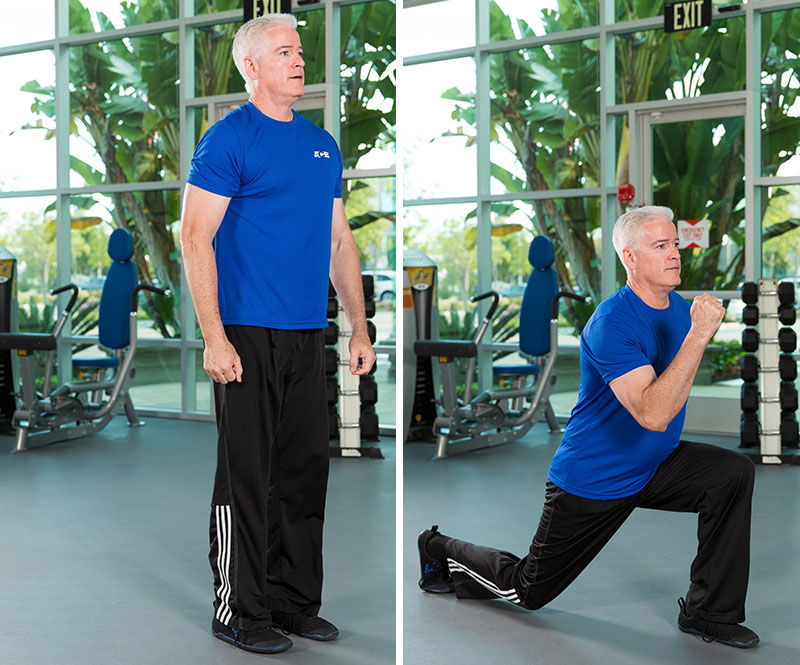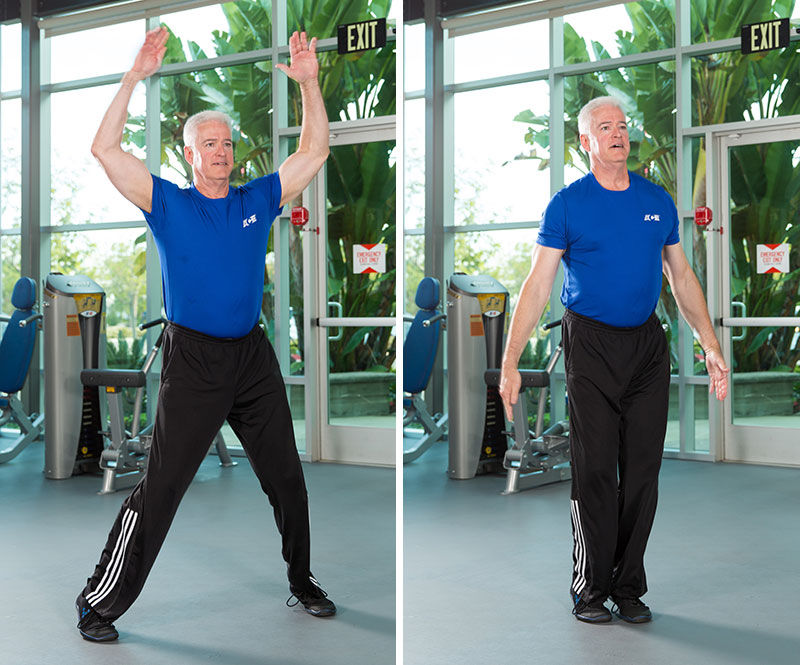High-intensity interval training (HIIT) continues to be extremely popular, largely due to its reputation for being highly effective and increasing caloric burn. As a result, many new clients or beginning exercisers are motivated to try this form of intense training. While most HIIT programs are designed for individuals with a strong base of fitness and experience performing powerful moves such as box jumps, medicine ball slams and battle rope exercises, it is possible to create basic HIIT routines that will appeal to new exercisers, while also helping to increase their fitness levels.
The key to designing HIIT programs for beginning clients is to start simple and gradually progress to more complex movement patterns. Here is a sample workout and some basic guidelines for creating safe and effective HIIT programs for your new participants and clients.
Basic HIIT Guidelines
HIIT workouts typically use interval times with a specific work-to-rest ratio, such as 30 seconds of work and 15 seconds of rest (30:15). While there is no set rule on which interval times work best, typically the shorter the work time the more intense the exercise should be. However, this approach may not always apply to certain populations, particularly those who struggle with overweight or obesity. These clients may fatigue early because of low fitness levels. Therefore, a 30:15 work-to-rest ratio is a safe place to start.
Rest can be passive or active. Once clients build coordination and stamina, active recovery may include balance exercises. The goal is to keep beginners in an aerobic phase, working at a rating of perceive exertion (RPE) level of 4 to 6 on the 0 to 10 scale.
The following sequence, which focuses on basic movement patterns that alternate between the upper and lower body, can be progressed or regressed to meet the needs of your clients. Complete one set of all seven exercises or, alternatively, complete the first three exercises as a set followed by the jumping jacks. Then complete the second set of three exercises followed by a second set of jumping jacks.
Body-weight Squat

Position the feet shoulder-distance apart with the arms by the sides. Lower the hips down into a squat position and bring the arms forward. Exhale and return to the original standing position, bringing the arms back down by the sides. It’s important to focus on keeping the core engaged and matching the breath with the movement. Continue this motion for the set time period.
Elevated Push-ups

Using a Smith rack bar or a TRX, assume an angled position with the arms extended. Engage the core and inhale, shifting the body weight forward as the elbows bend to a 90-degree angle. Exhale and push back to the starting position.
Backward Lunges

Stand tall with the feet hip-distance apart. Step the right foot backward and begin to lower the knee toward the ground. The right arm will simultaneously move forward and extend at the elbow. Step to the center and bring the left leg behind and begin to lower the knee toward the ground. The left arm will automatically extend forward. Continue alternating sides.
Plank With Knee Drive

Assume a high-plank position. Bring the right knee toward the chest and return to the starting position. Next, bring the left knee toward the chest and return to the starting position. Continue to alternate driving the right and left knee forward. If working directly under gravity is too challenging, place the client on an elevated surface such as a bench.
Alternating Side Lunges

Stand tall with feet hip-distance apart. Shift the body toward the left and bend the left knee while straightening the right leg. Step to the center and shift the body toward the right, landing and bending the right knee. Step back to the center and repeat, alternating from side to side.
Jumping Jacks

Stand tall and jump the legs wide and lift the arms overhead. Jump back to the center and bring the arms back by the sides. Continue this movement for the set time period.




 by
by 




 by
by